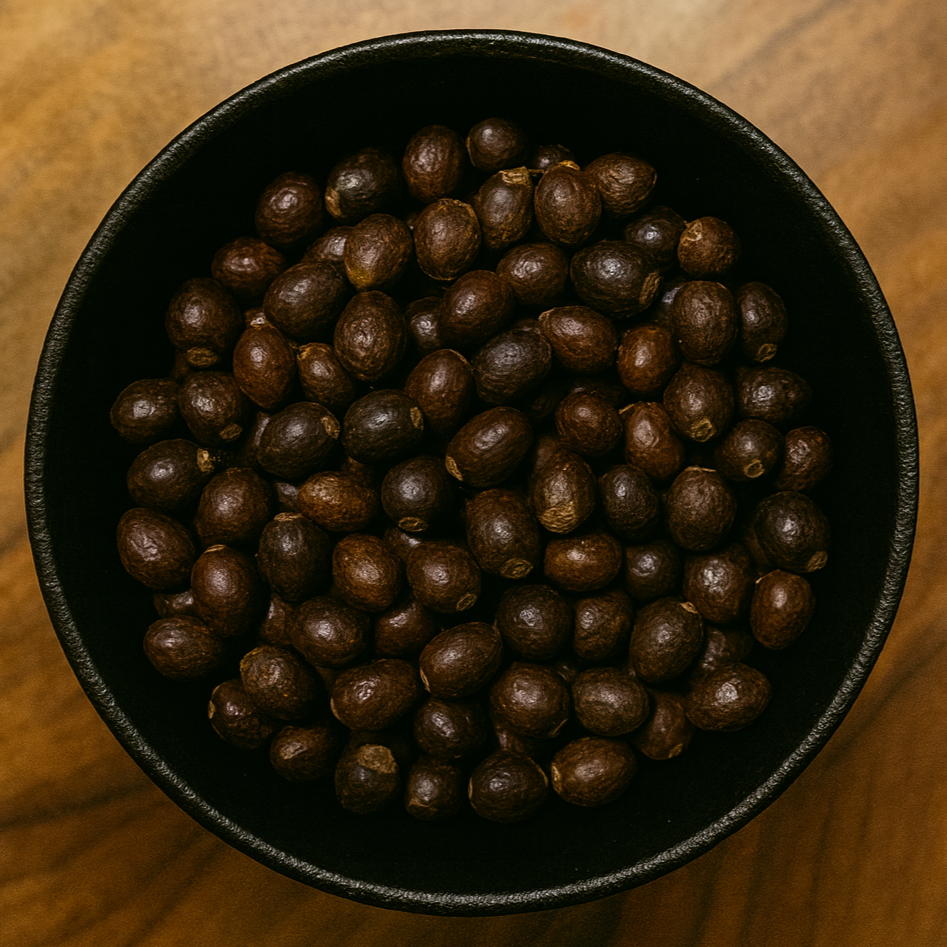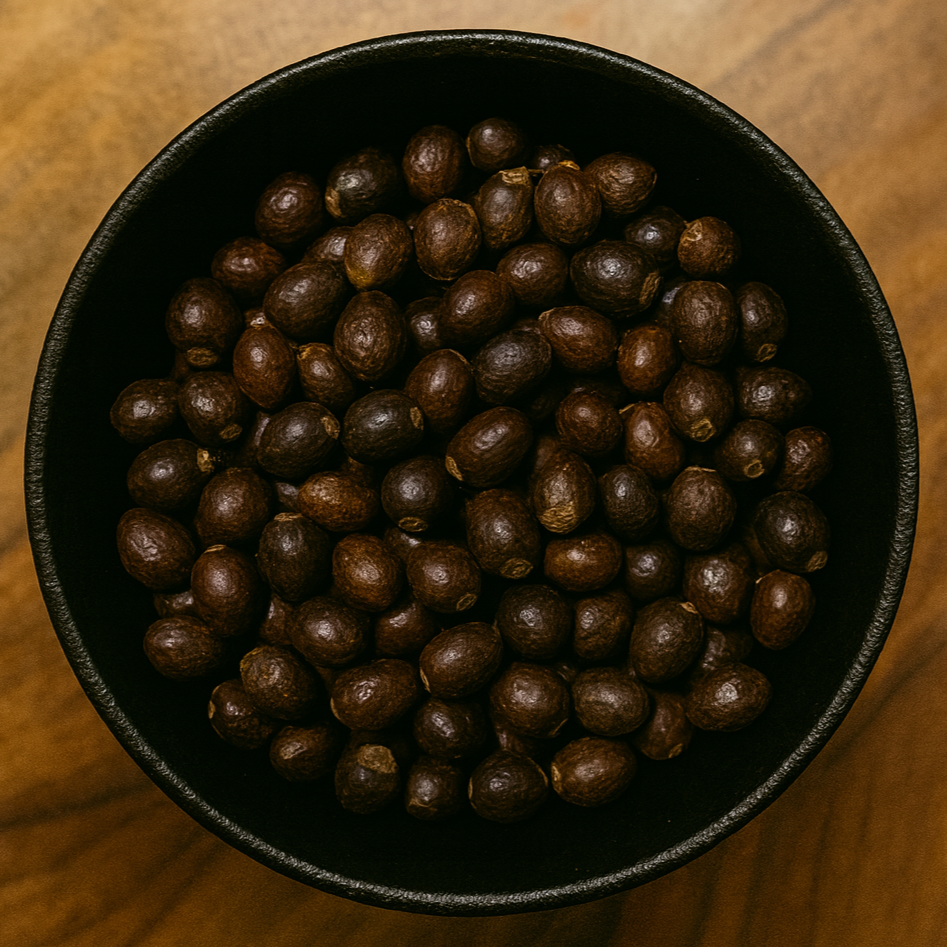Khan Hing Tong
Longan Seed Core Whole (Dimocarpus Longan)
Longan Seed Core Whole (Dimocarpus Longan)
Couldn't load pickup availability
Share
Longan Seed Core Whole (Dimocarpus longan) is the dried seed of the longan fruit—known in traditional Chinese medicine (TCM) as Long Yan Zi—and is valued for its astringent, pain-relieving, and circulatory-supporting properties. Though the flesh of the longan fruit is widely enjoyed as a tonic food, the seed itself has long been recognized in traditional practice as a warming and restorative herb that helps regulate qi, move blood, and ease pain caused by cold or stagnation.
In TCM, Longan Seed is regarded as bitter, astringent, and slightly warm, entering the Heart, Liver, and Kidney channels. It is traditionally used to disperse cold, reduce swelling, stop bleeding, and relieve pain, particularly in conditions such as abdominal discomfort, hernia pain, and traumatic injury. When roasted or ground, the seeds are sometimes applied externally to wounds or swelling to aid circulation and promote healing.
Like its close relative, the Lychee Seed (Li Zhi He), Longan Seed is also associated with qi regulation and blood movement, helping to ease emotional tension and cold-induced constriction within the body.
Modern phytochemical research on Dimocarpus longan seeds reveals the presence of polyphenols, saponins, and flavonoids, which contribute to antioxidant, anti-inflammatory, and analgesic activities. These compounds align with the seed’s traditional roles in pain management, circulation enhancement, and tissue support.
Each batch of Longan Seed Core Whole (Dimocarpus longan) is carefully cleaned and dried to preserve its hardness, natural luster, and medicinal strength. When simmered in decoctions or roasted for topical preparations, the seeds release a mildly bitter, warming essence traditionally used in formulas for cold-related pain, trauma recovery, and qi stagnation.


